Last week, I weighed the pros and cons of the phone camera vs. the digital SLR while traveling. I also showed off a few photographs from Ireland, some of which will hopefully make their way into future Distant Era work.
What I didn’t mention was that the day we went to Ireland, I woke up at 7 a.m. in Plano, IL, to do some portrait sessions at a live action steampunk fantasy role-playing event called Auxientia, where I’d been taking pictures since the previous Thursday. As soon as the event ended, we drove back to Chicago, unpacked, repacked for Ireland, took a Lyft to O’Hare, flew seven-something sleepless hours, landed, got a rental car, and learned to drive on the other side of the road during the two-hour drive to southeastern Ireland.
Auxientia
The fantastical Mutu Valley of the past few days seemed long ago and far away. There, passenger airships and wild wyverns patrolled the skies, navigating between rocky spires where the crumbling cities of the ancient empire peeked through; where the five factions of one old city on the banks of an inland sea still contend with threats from without and within, and the challenges of a changing time.
I posted some portraits and information on Auxientia last year, but for those new to the Traveller, here’s the gist: I co-created this game with Nathan Pease and Hilary Dirks Norton in 2019. Most of my work went into the groundwork—the early years of building and defining the experience and its website. These days, Nathan and Hilary direct and produce the event, and a handful of great writers make it happen. I don’t have the time I once had to work on games. So I help out, keep the site running, and help oversee the production, and of course I photograph.
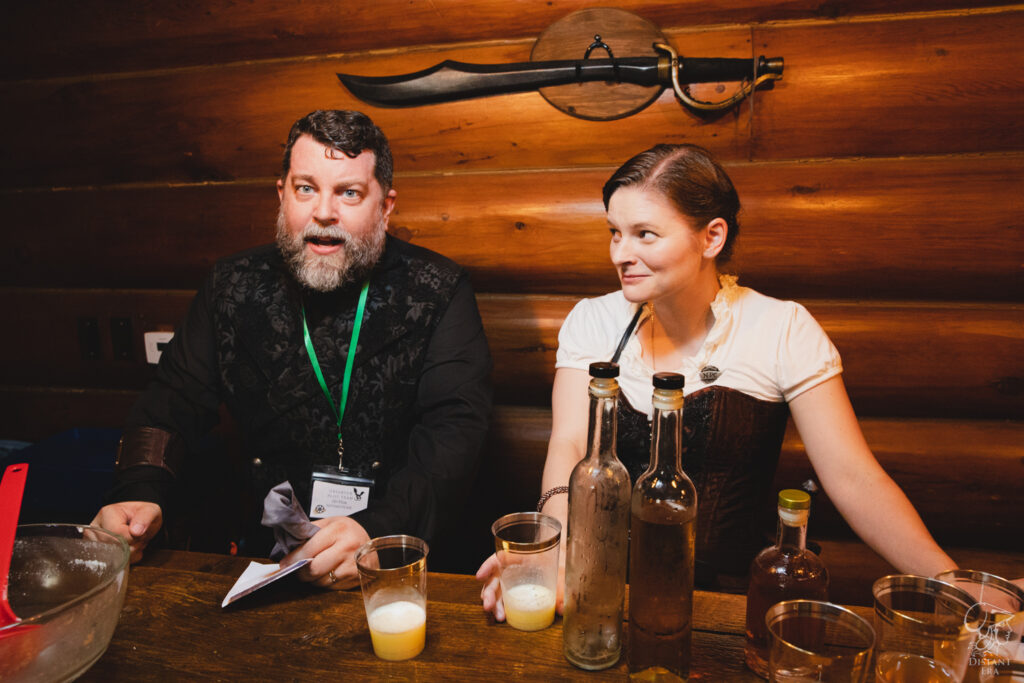
Documenting Night One with Handheld Flash
This year, along with offering the fine art portraiture style I do with backgrounds and studio lights, I tried some documentary-style photography, something like what I used to do for live action role-playing games in the pre-pandemic era, but this time with flash.
My friend (photographer) Greg Inda and I had recently photographed the Lookingglass Theatre unGALA, in downtown Chicago. During that event, when appropriate we used our camera-mounted flashes to bounce light off ceilings and walls in order to broadly illuminate our subjects and the scene. We used color temperature orange gels on our flashes to match the tungsten lights of the event. It worked wonderfully.
After the Lookingglass unGALA, I remembered an event where I’d put my flash on a light stand, which I’d held in one hand, with the camera in the other, and rather than place the light to illuminate the scene, I used the light the way I’d use it in studio, moving it around to create shadow patterns. I forgot about this during the pandemic and wanted to try it again. I thought the opening night of the live action role-playing game would be the best time to do this, when all the players were meeting, introducing themselves, and immersing in the politics and intrigue of the world.
Creating Drama with Shadow
Here are a couple images to illustrate the effect of moving the light. On the left, I’ve held the light high and to the left, causing the shadow from Barry’s nose to connect with the shadow on his cheek and creating a triangle of light beneath his eye—a classic Rembrandt pattern. On the right, I’m holding the light directly above Deana’s head, creating deep shadows that emphasize her cheekbones. This is a little different from how I usually photograph events, but it’s exactly the same way I shoot in studio. Neither way is “better.” The best way to photograph is whatever the job is. Since these particular images were at my own discretion, I had only to please myself, and I felt like experimenting.
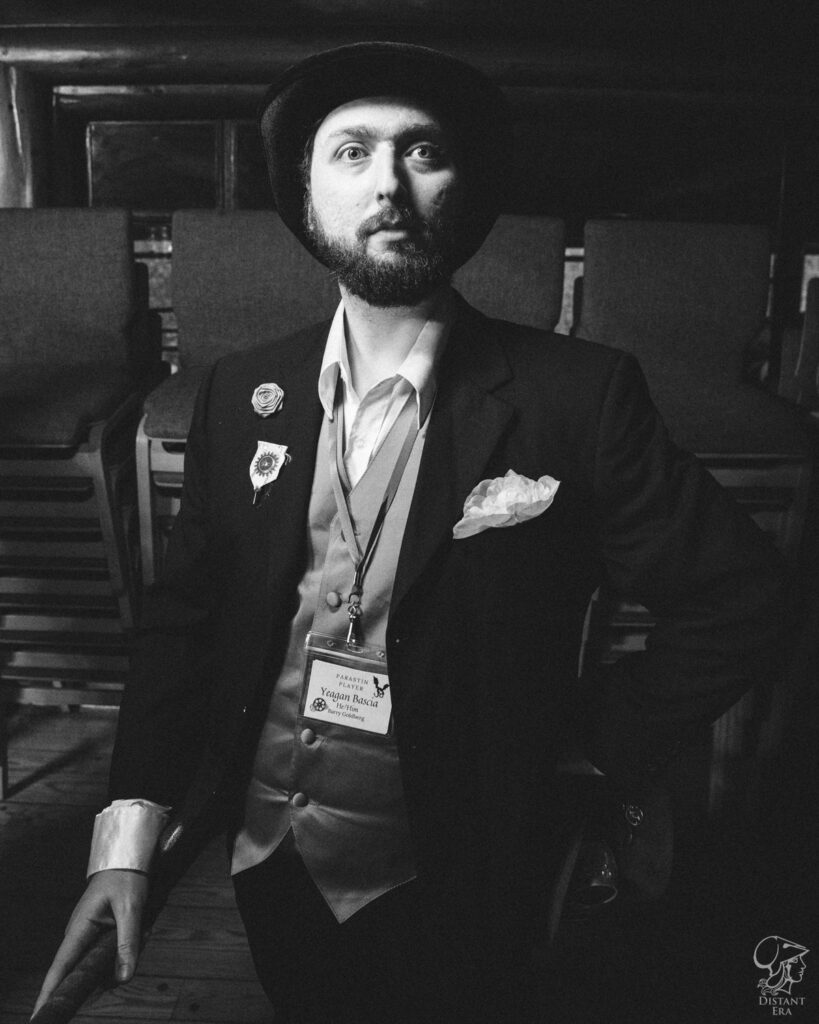
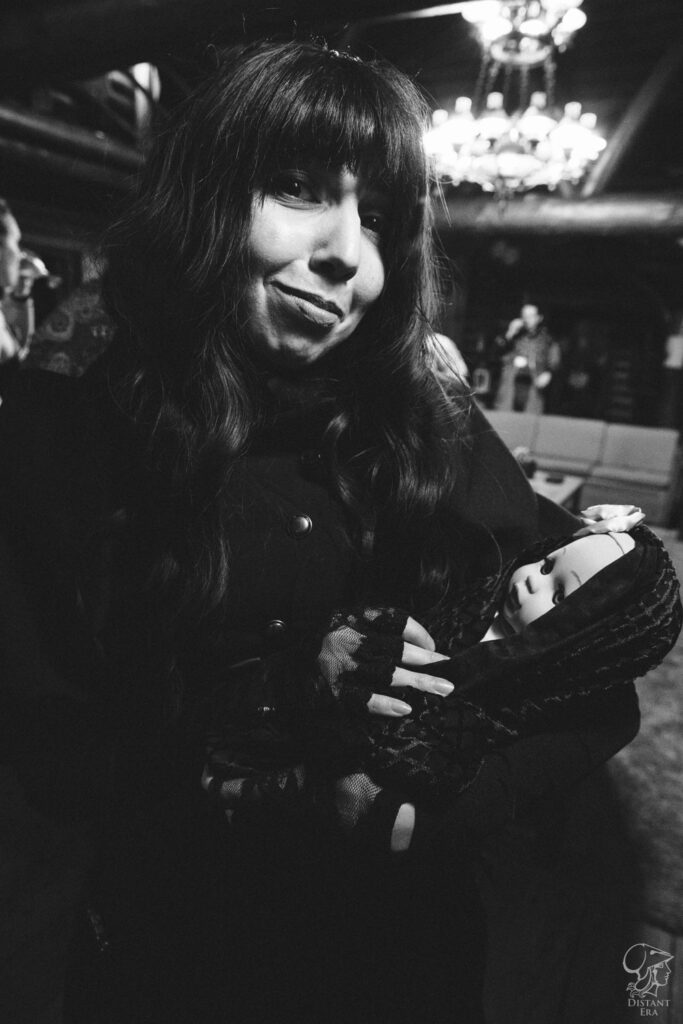
Black-and-White and Red All Over
Bowler hat on my head, I floated through the room as a reporter for The Auxientia Observer. (Unfortunately, I didn’t pack a costume this time.) I positioned the flash where I wanted it, in order to get these “paparazzi pics” for the newspaper. After applying some film stylings to them in editing, I distributed the images to the players as soon as I returned from Ireland.
I chose not to correct my flash for the room’s tungsten lights, preferring to separate the subjects from their warm background with a pale wash of flash, but I don’t know that it mattered, as the light was very specific, and thus subtle; because the light’s not washing over the whole scene, the subjects’ skin still retains the warmth from the tungsten lights surrounding them, and the flash simply focuses the image and shows the viewer where to look.
Be default I distributed the images in color, but Auxientia being a bit old fashioned I made a second round of edits and converted them all to black-and-white photographs. Those black-and-white images emphasize where I placed the light, so I’ve decided to include them in the gallery here rather than their color versions. Here’s a comparison of the black-and-white vs. the color photographs I distributed to the players. Followers of The All Worlds Traveller have seen these two before, here and here.
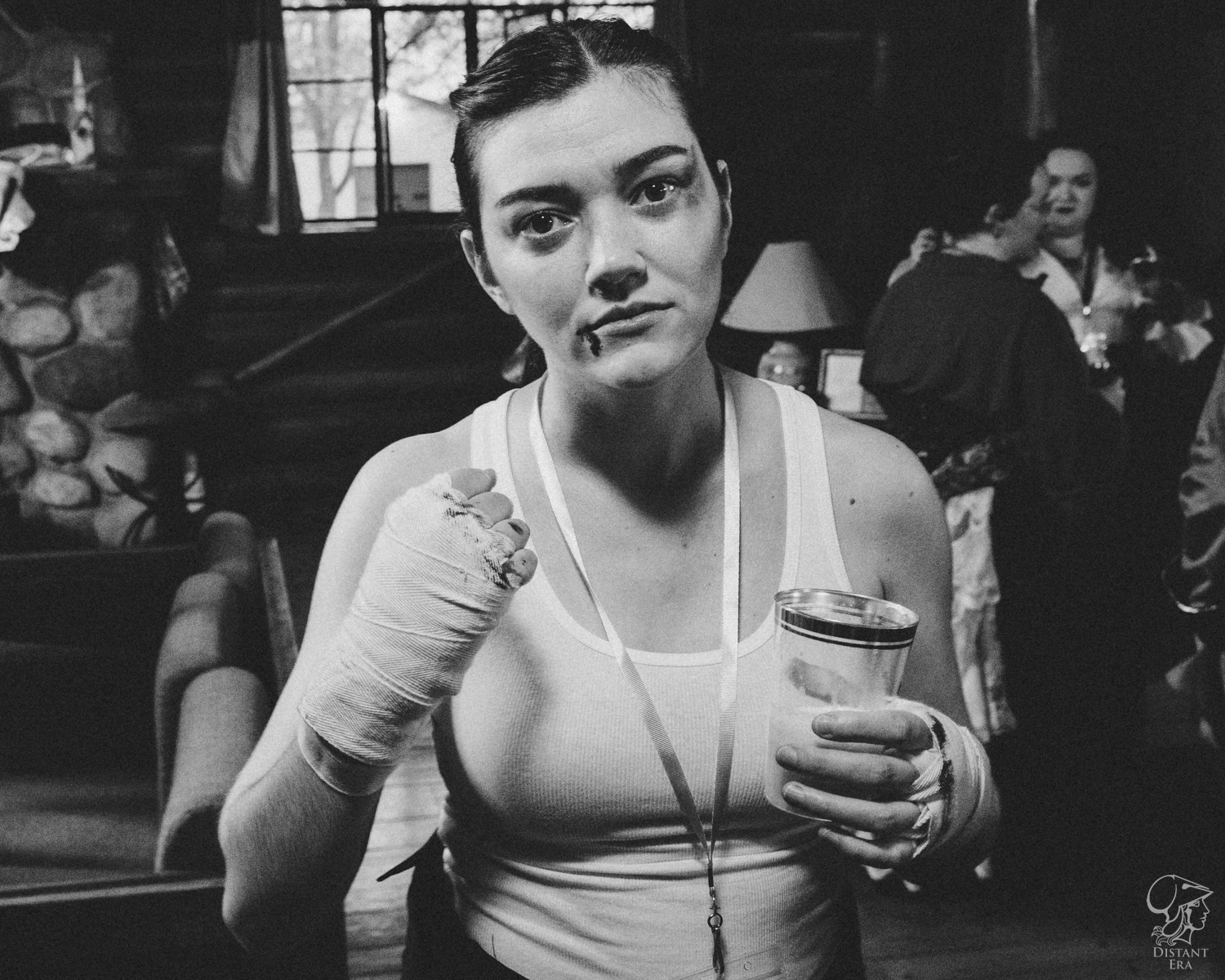
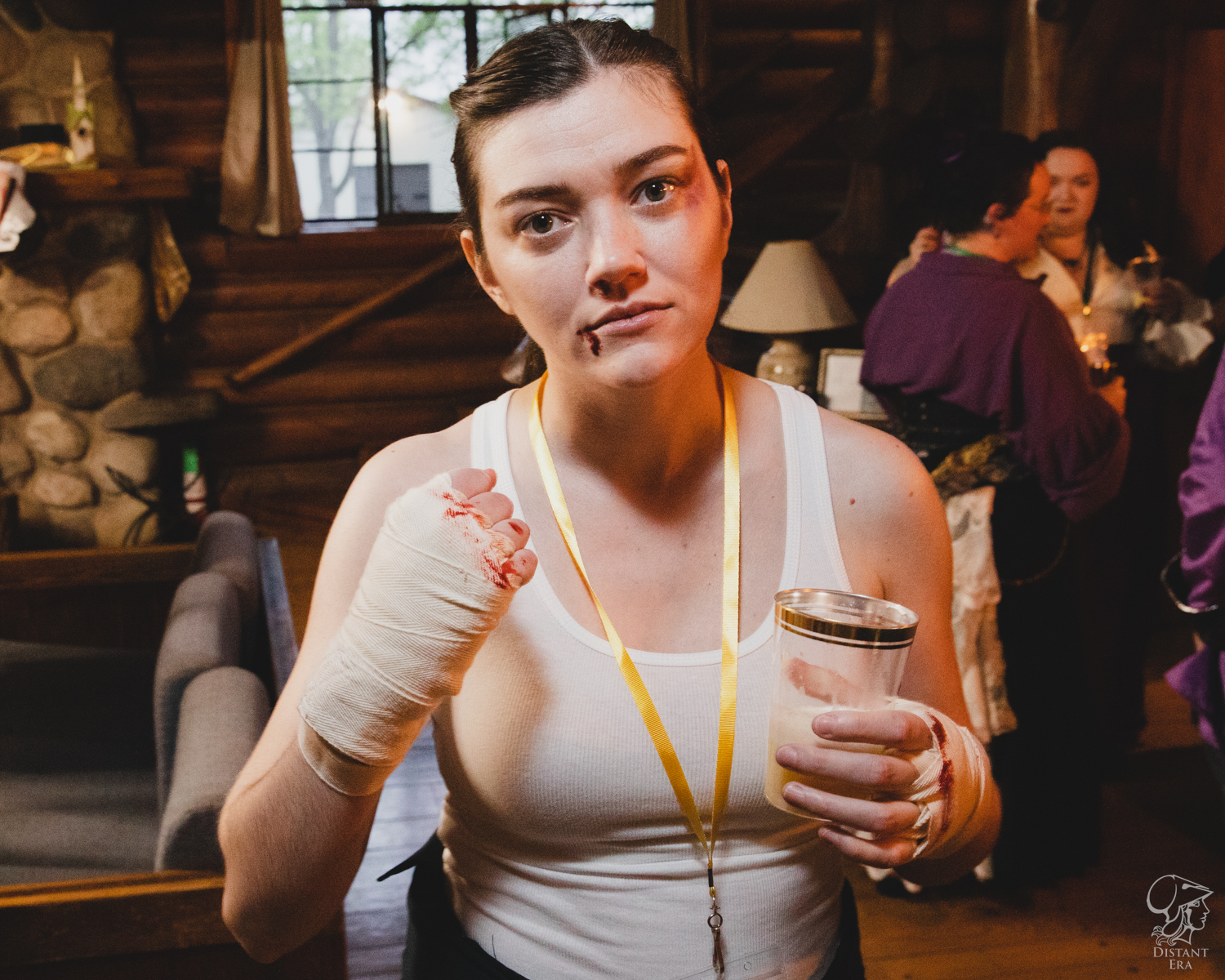
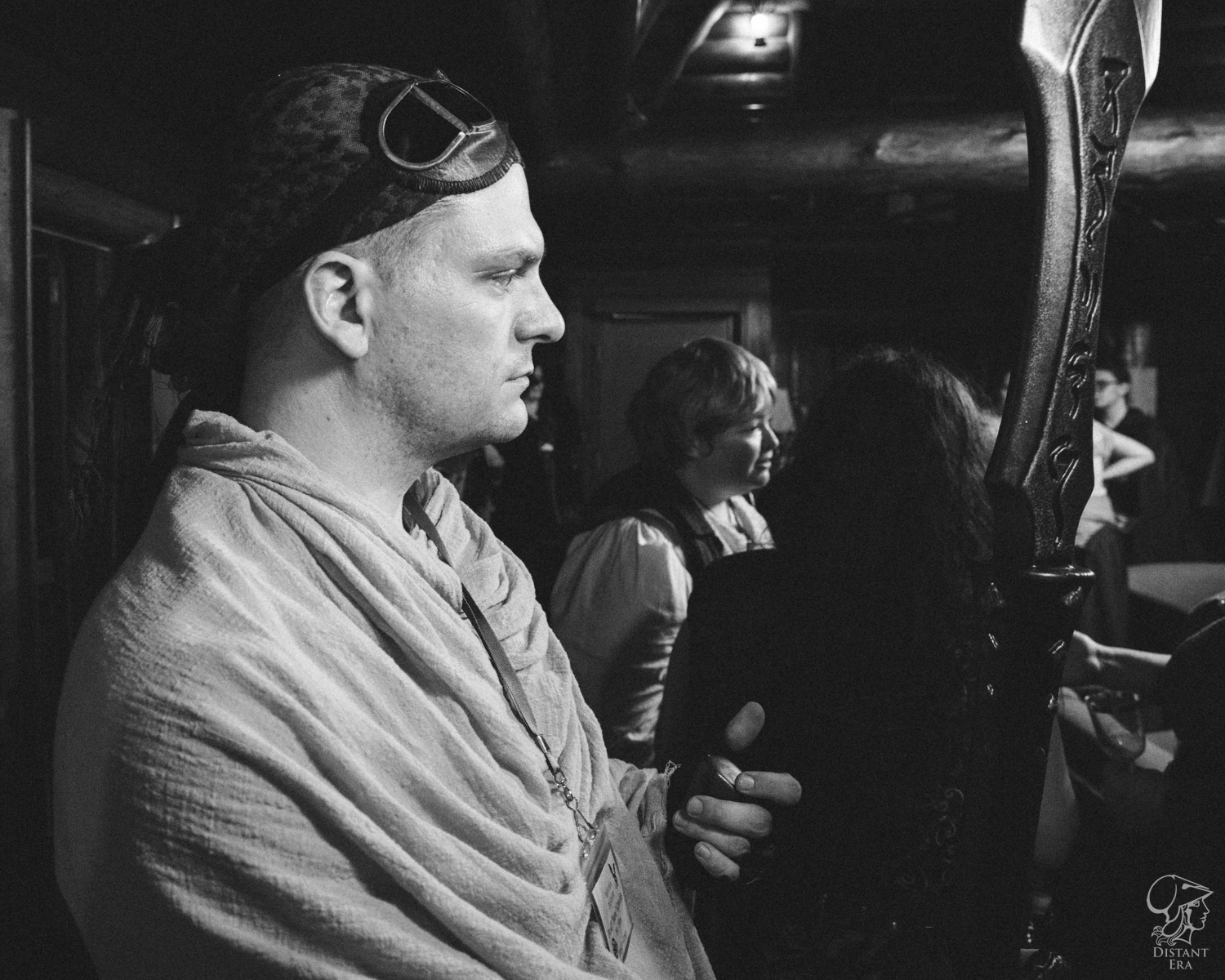
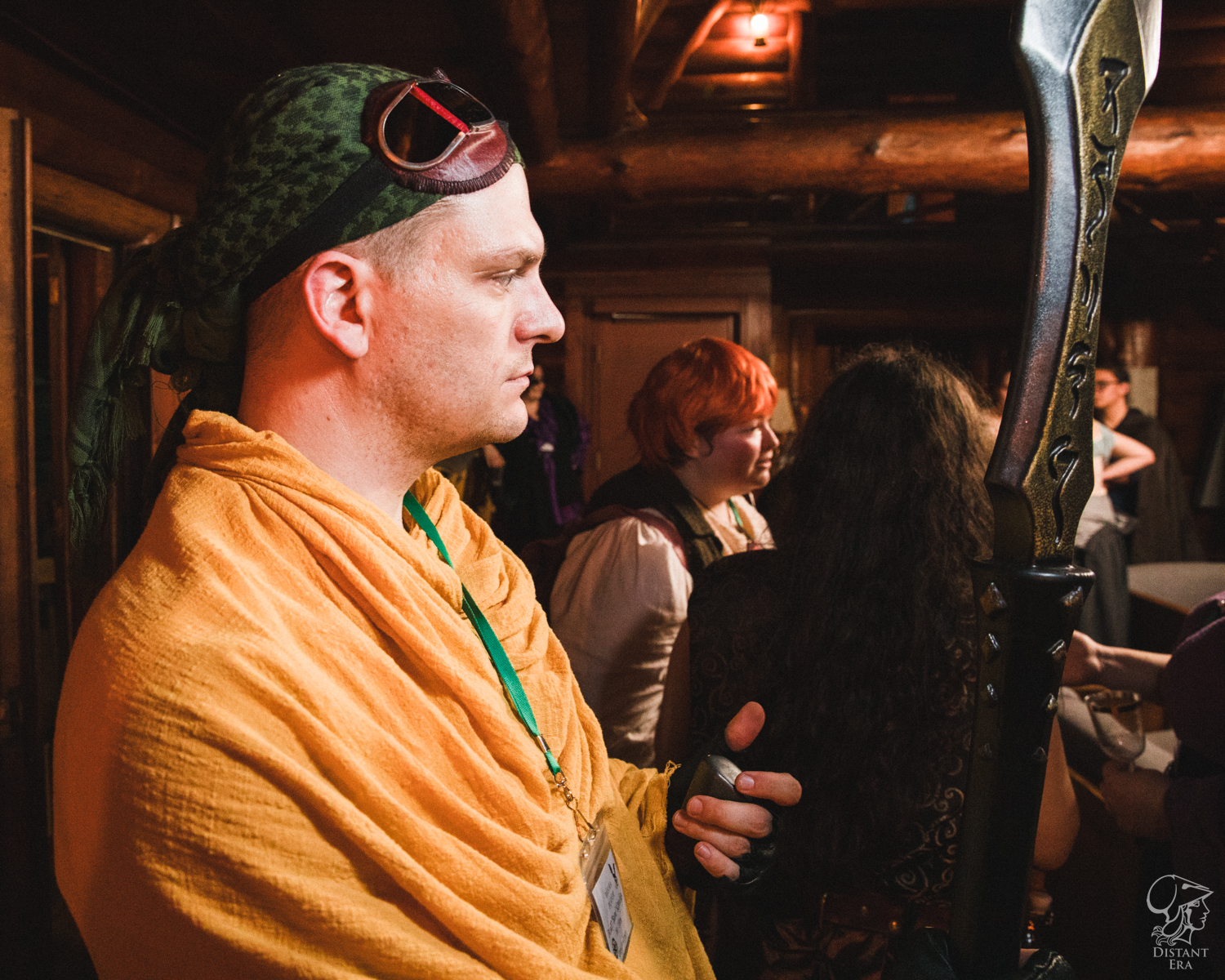
The Black-and-White Auxientia Gallery
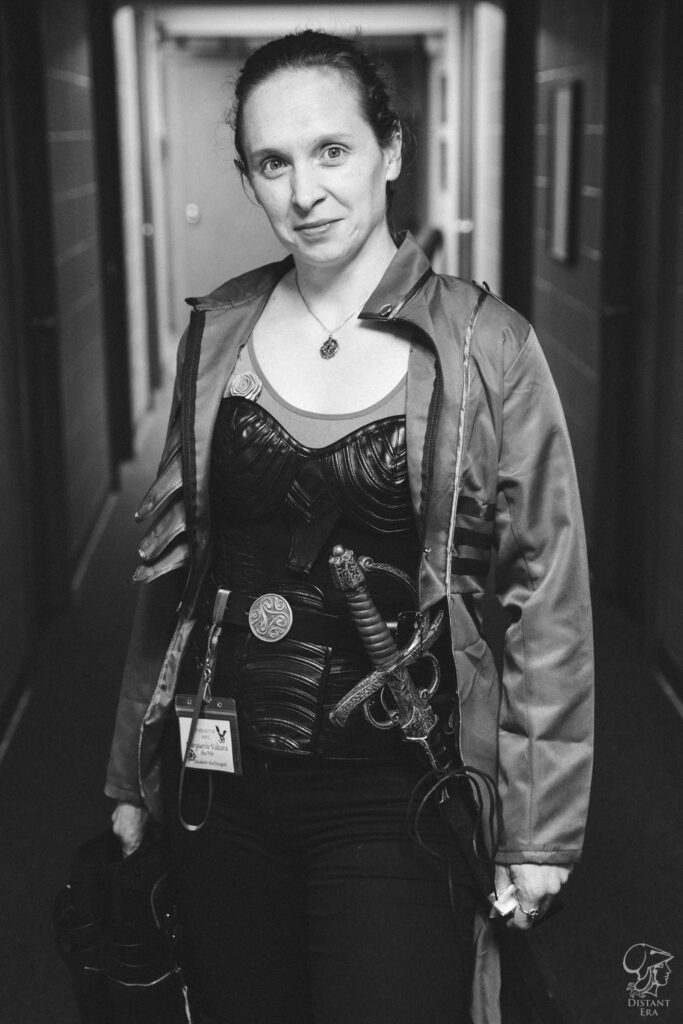
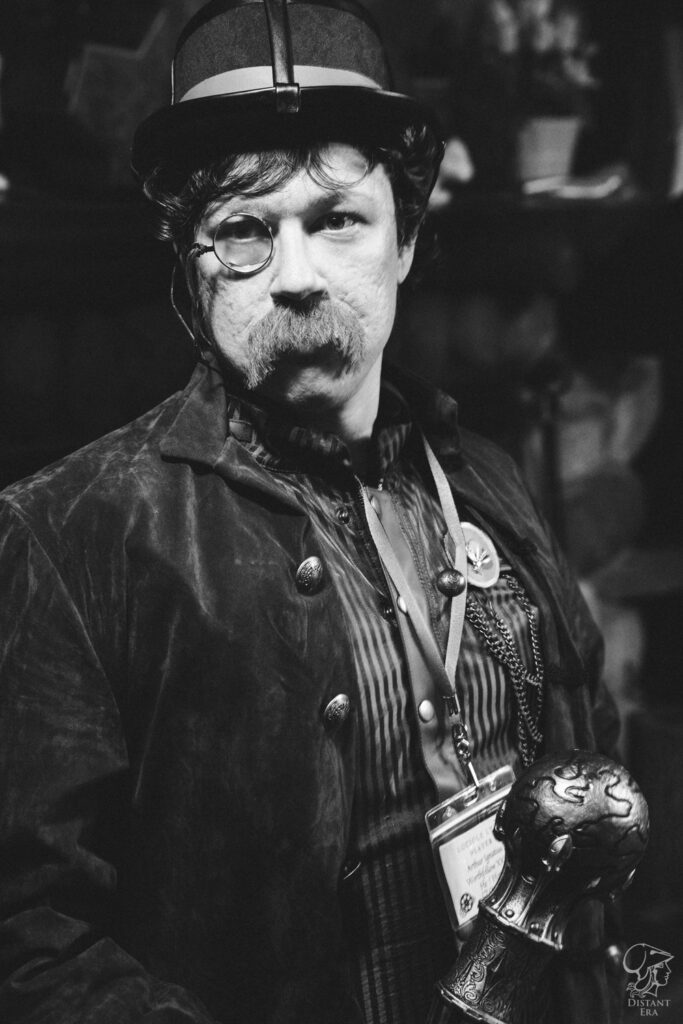
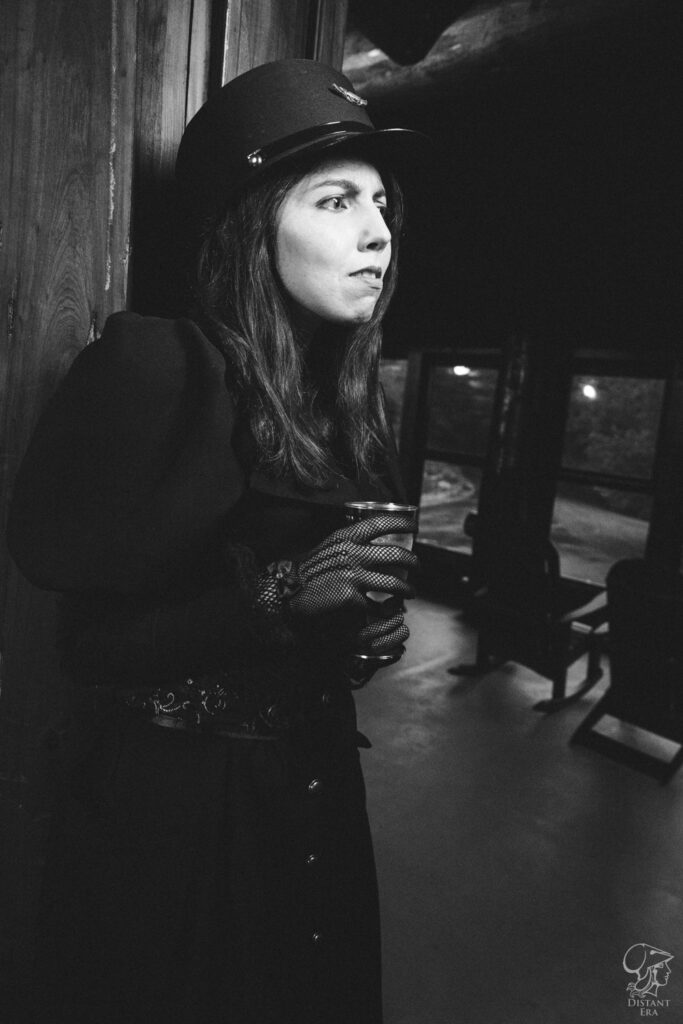
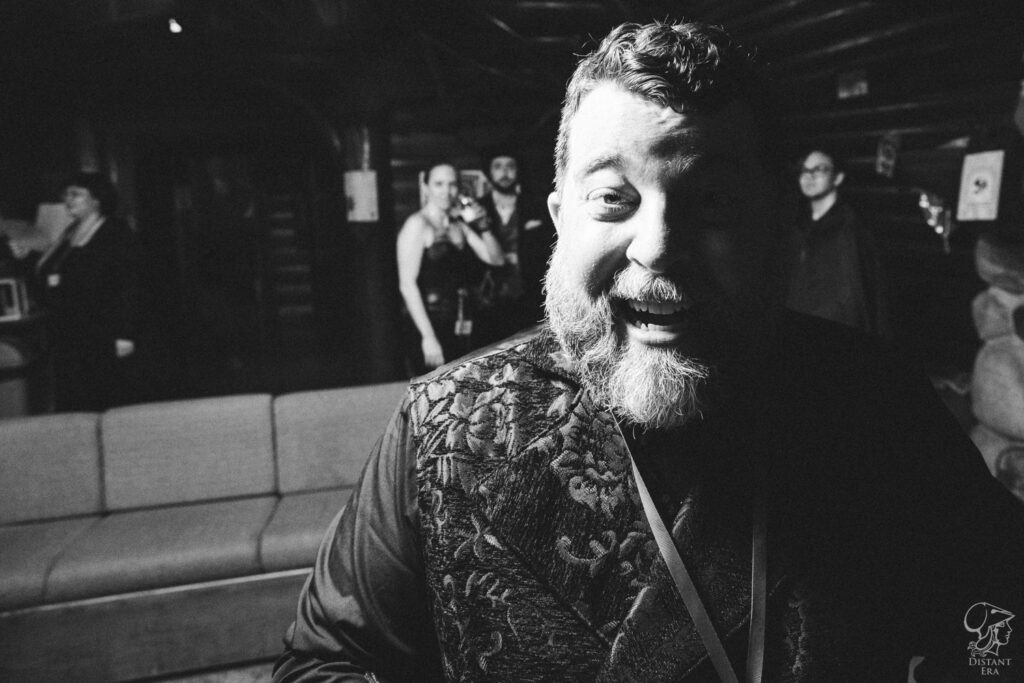
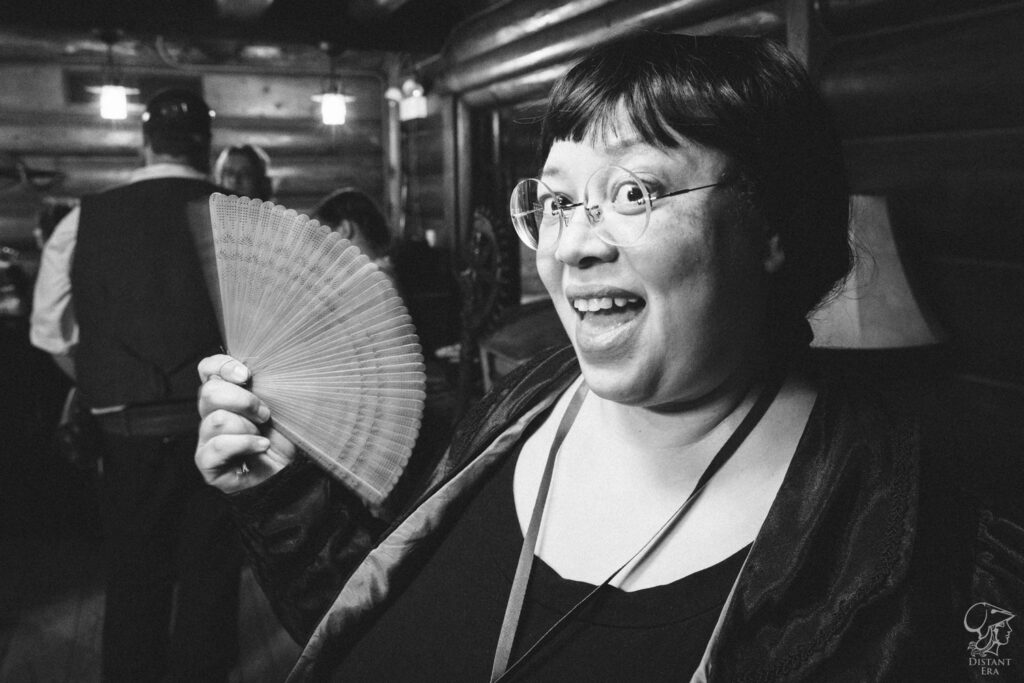
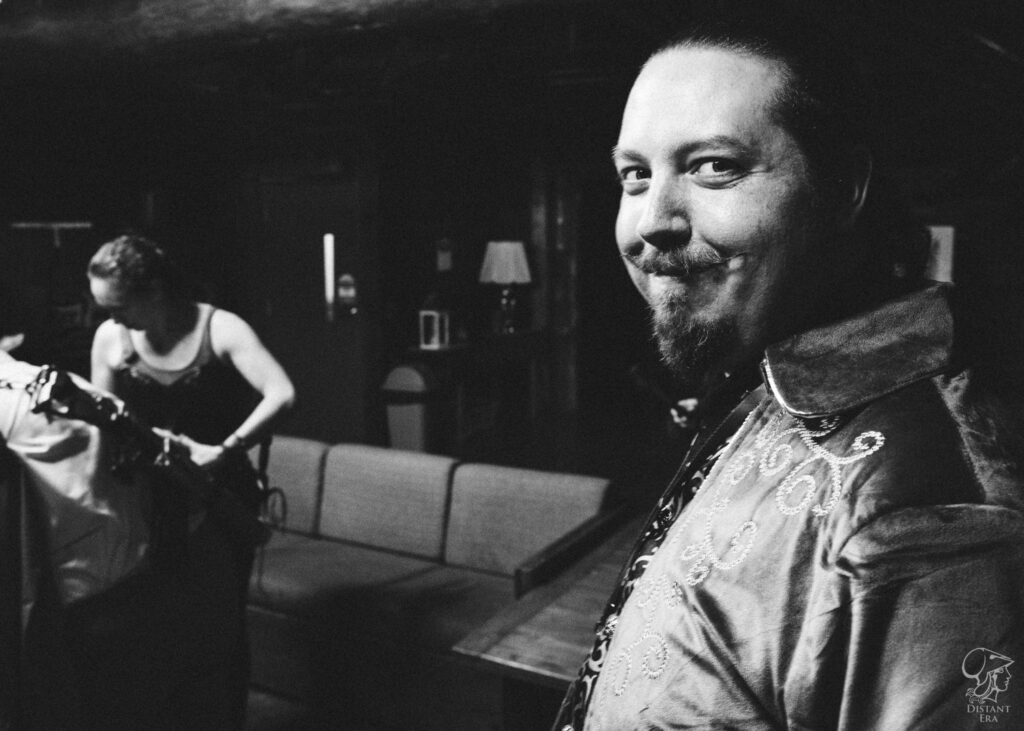
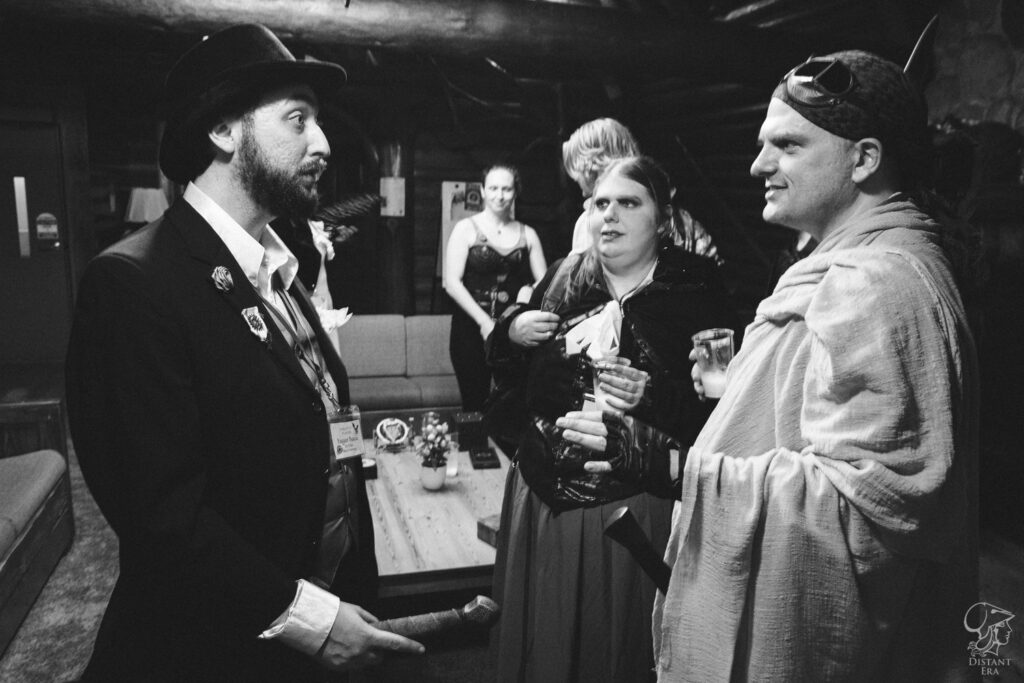
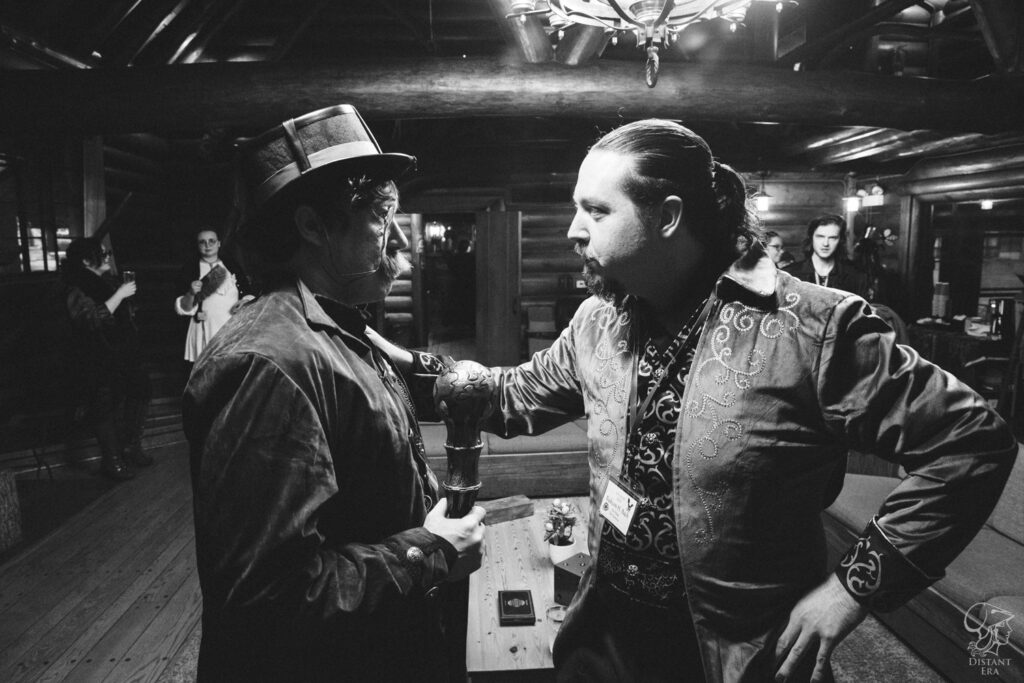
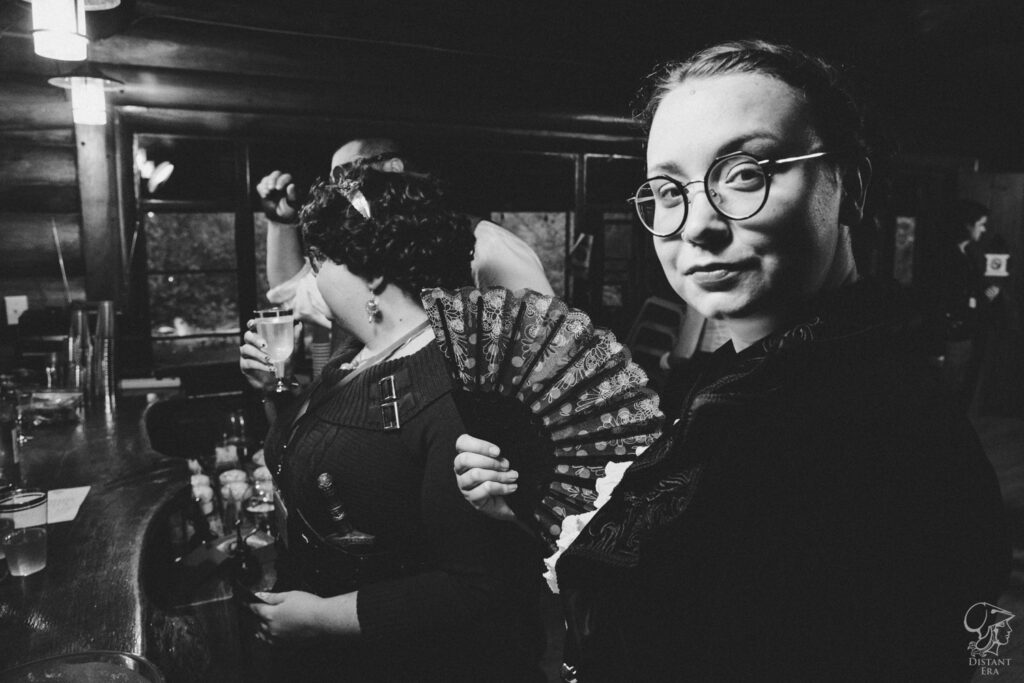
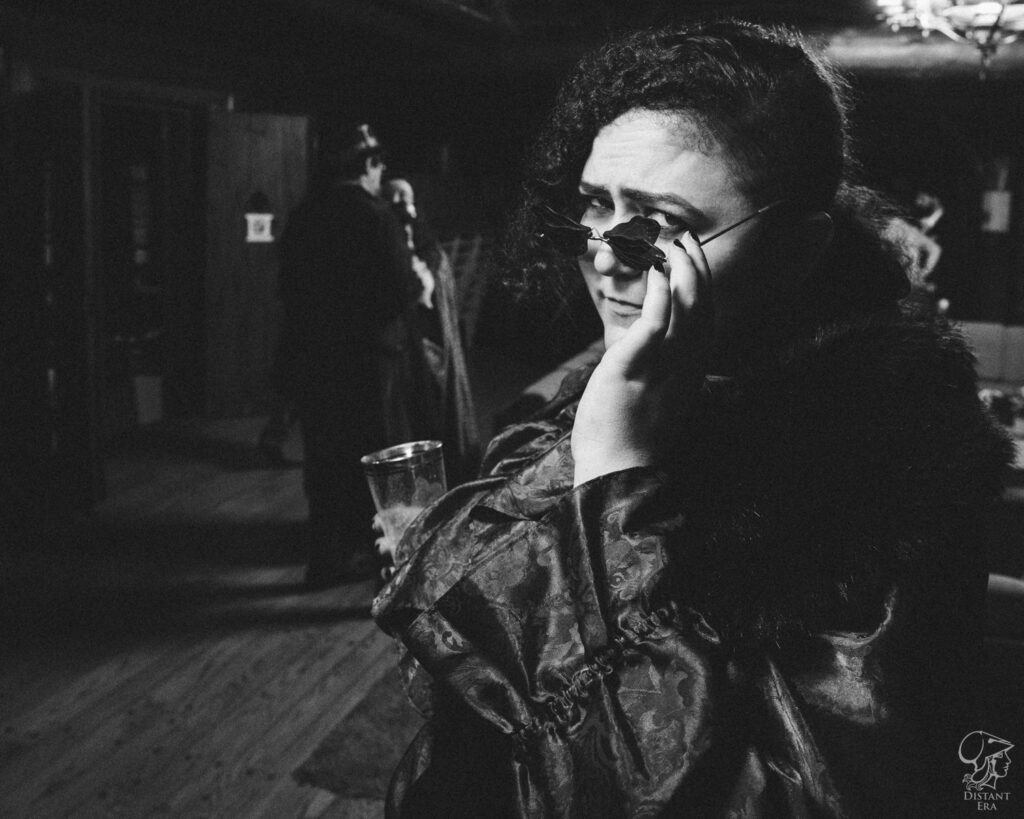
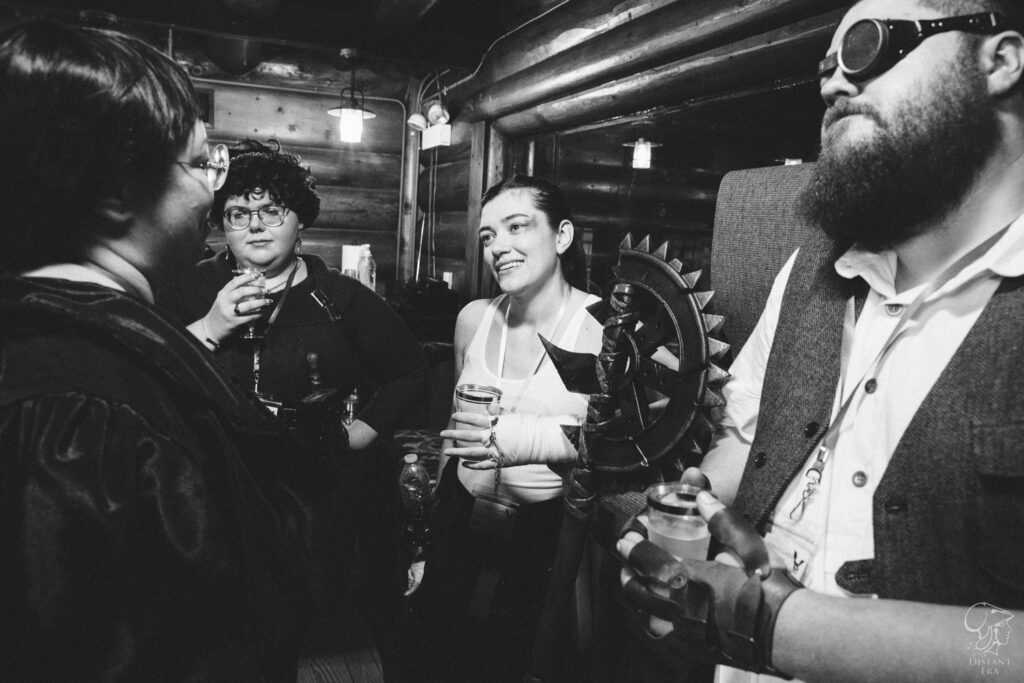
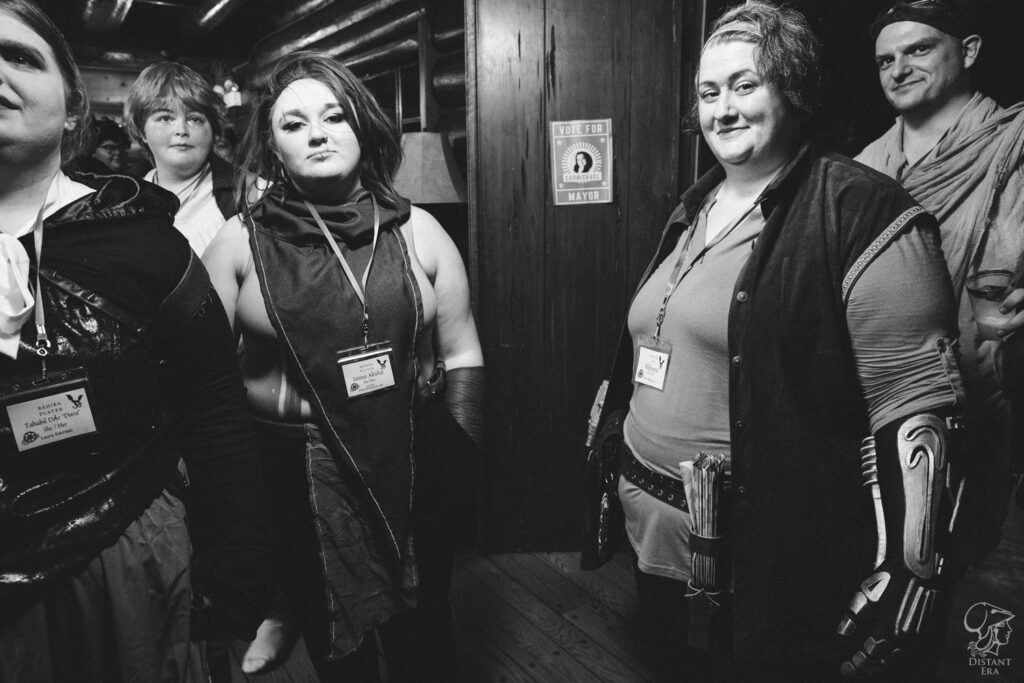
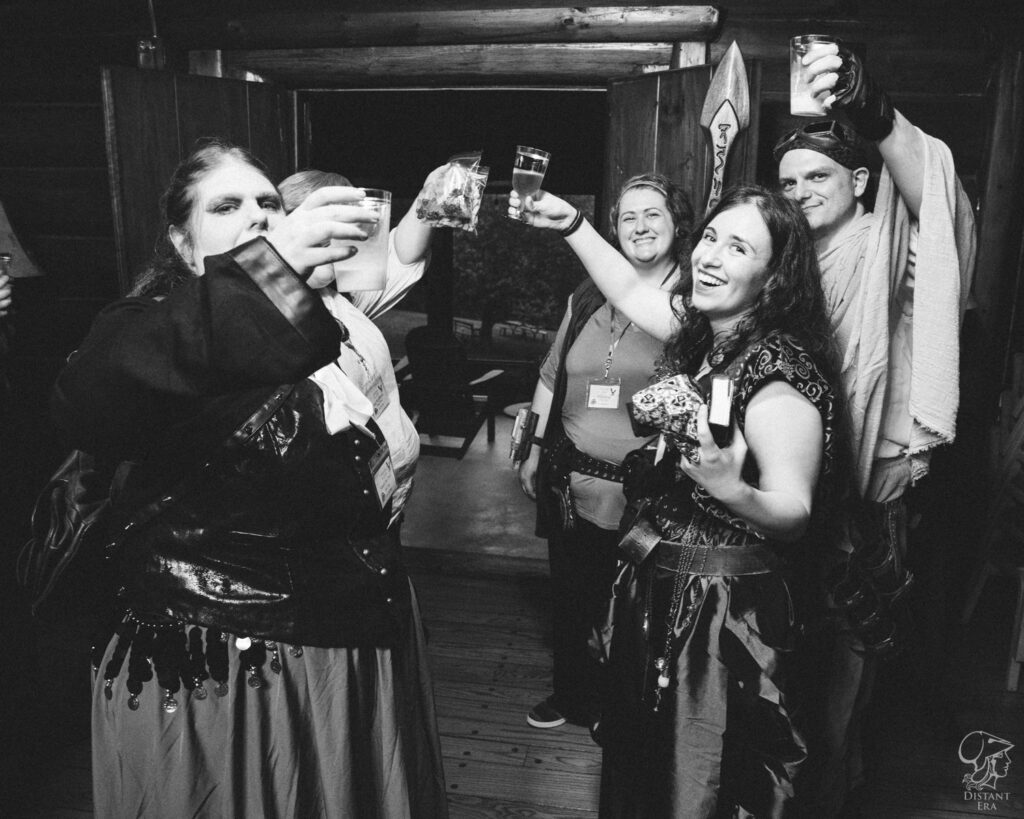
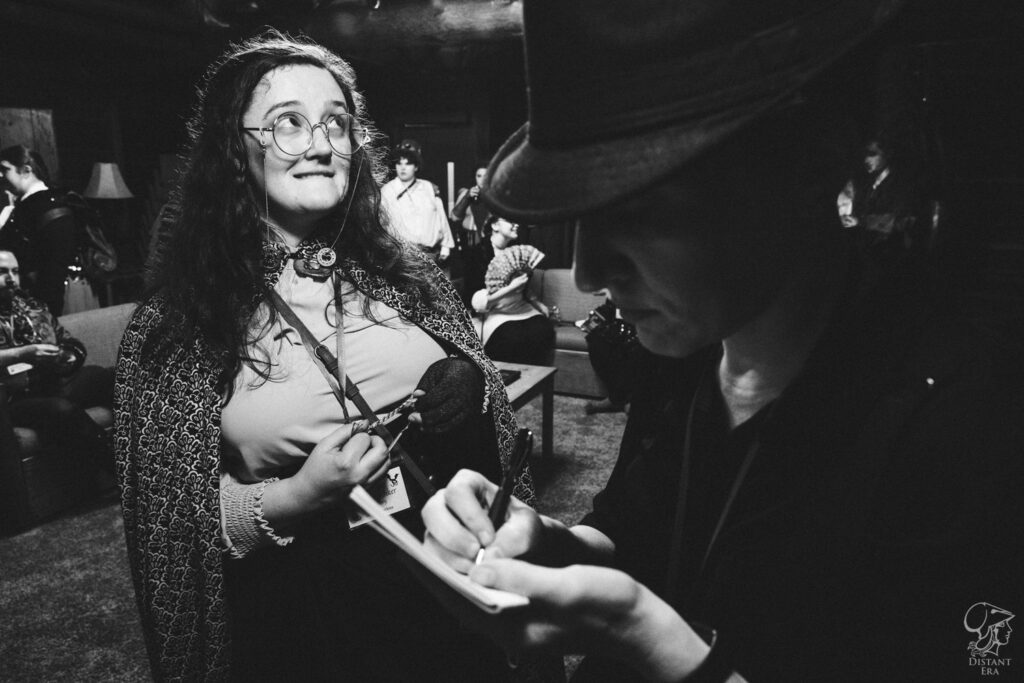
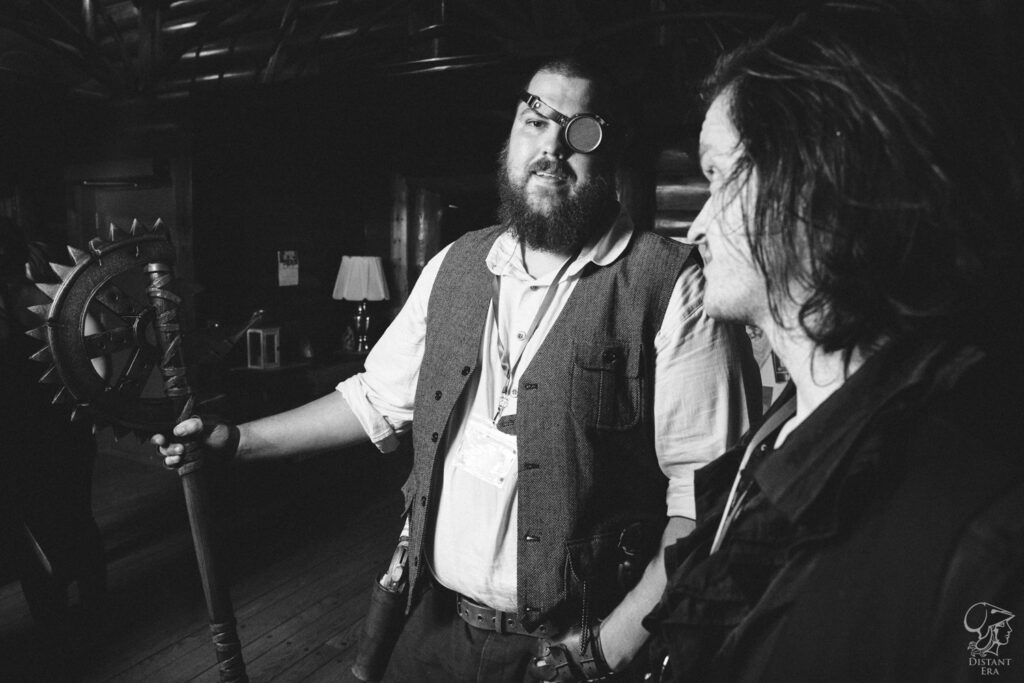

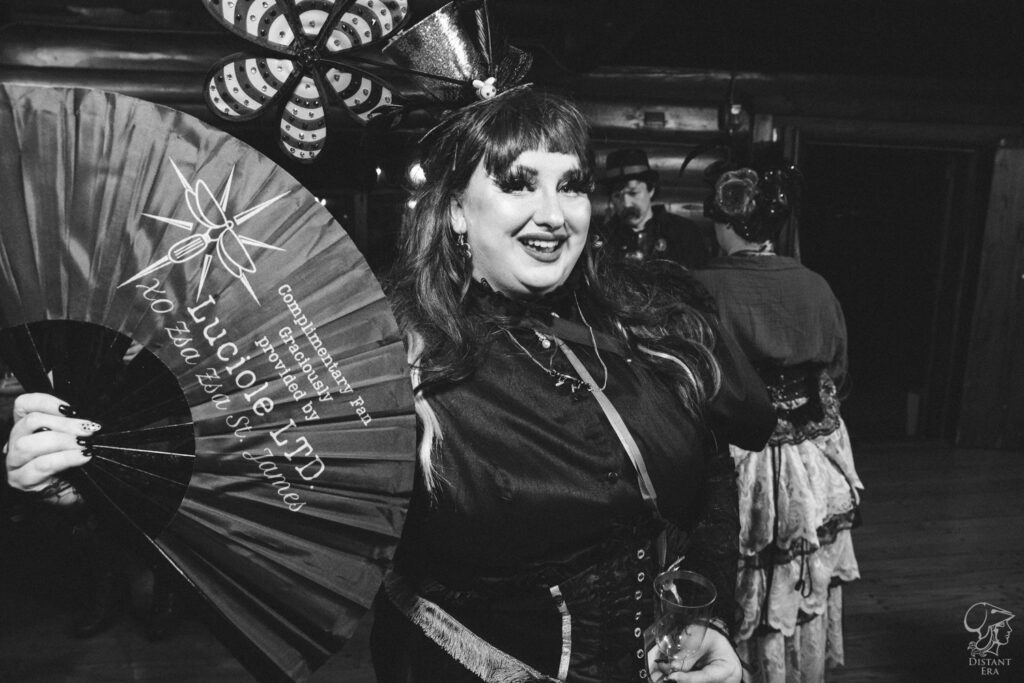
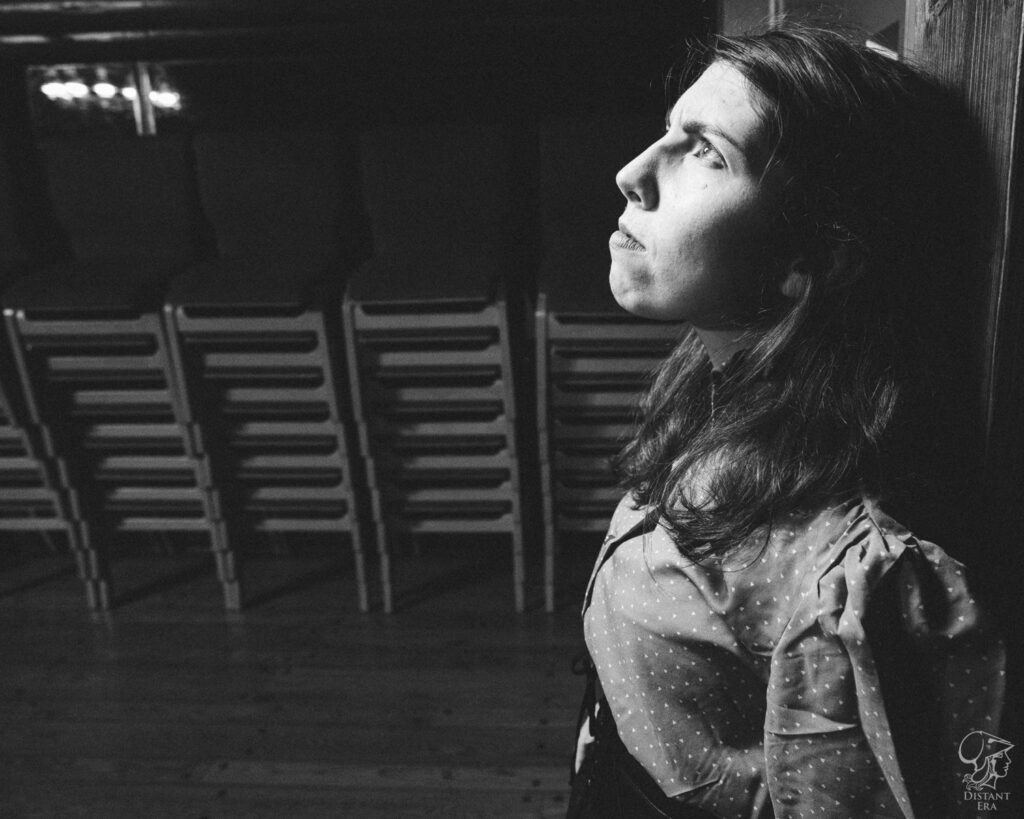
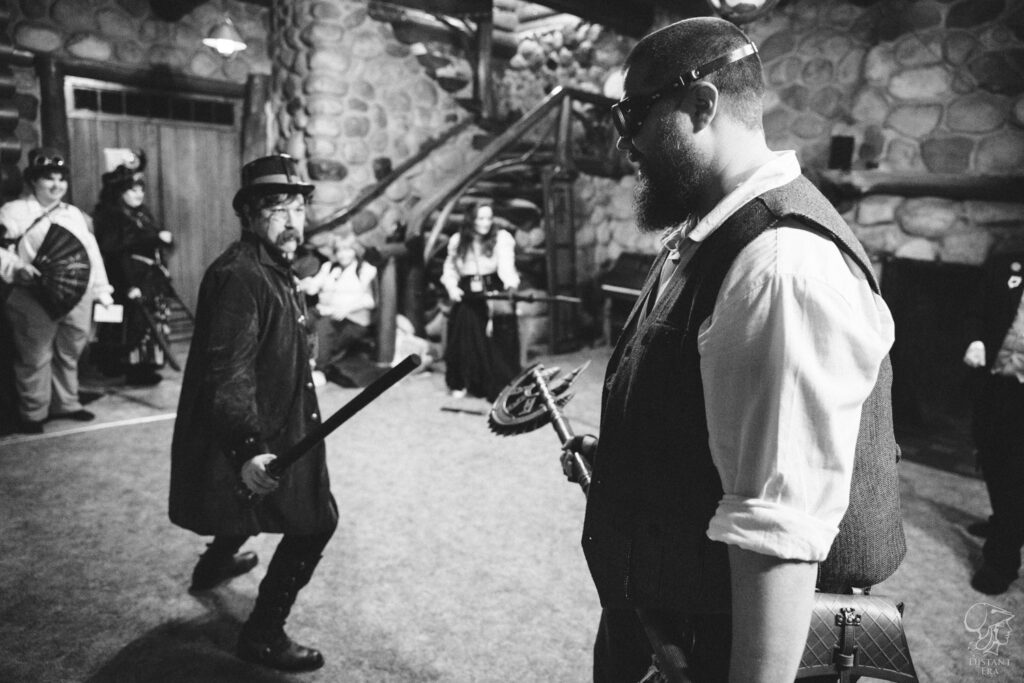
In the coming weeks, I’ll share some of the glorious portraits that players commissioned at Auxientia. I’m really stoked to show them off!

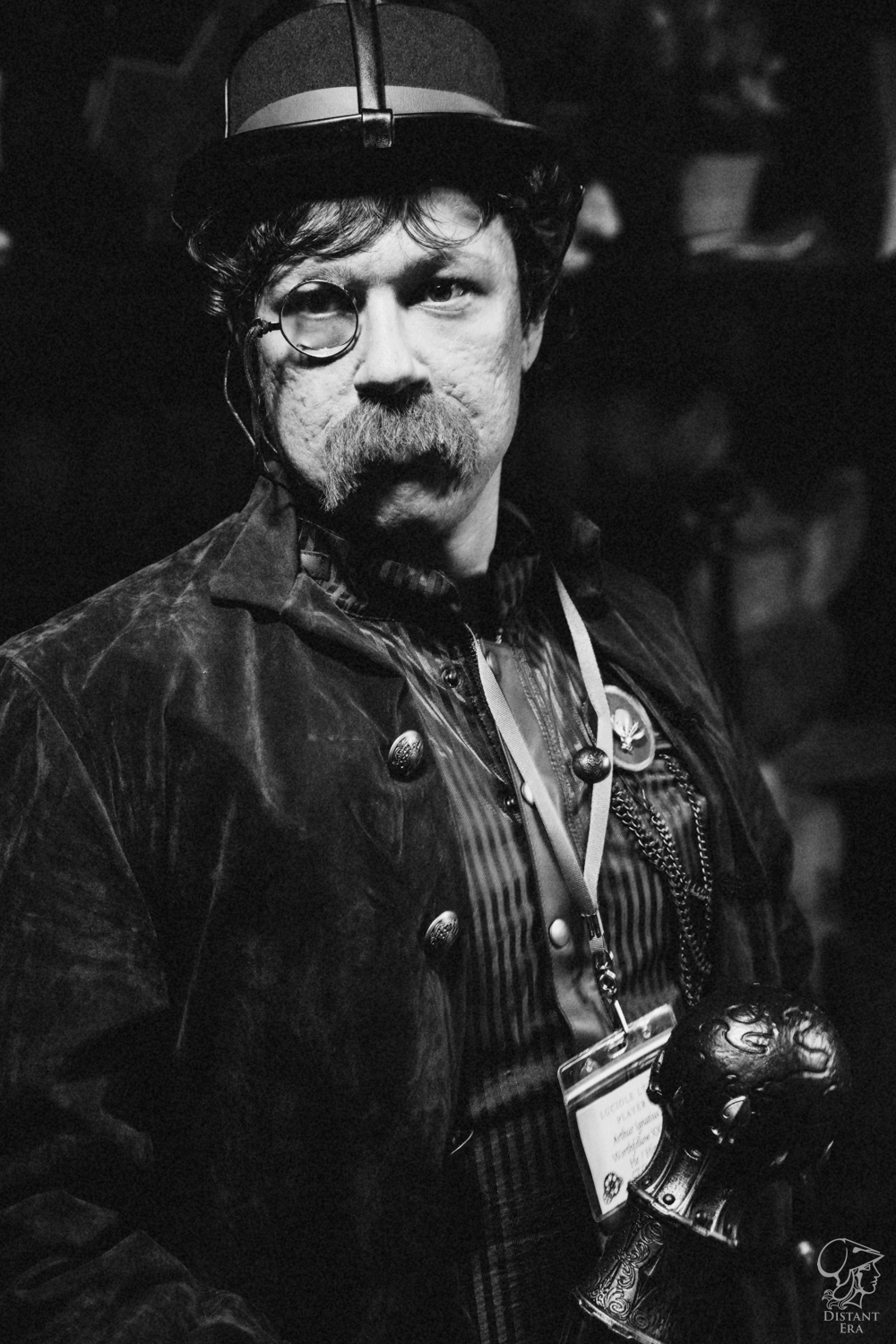
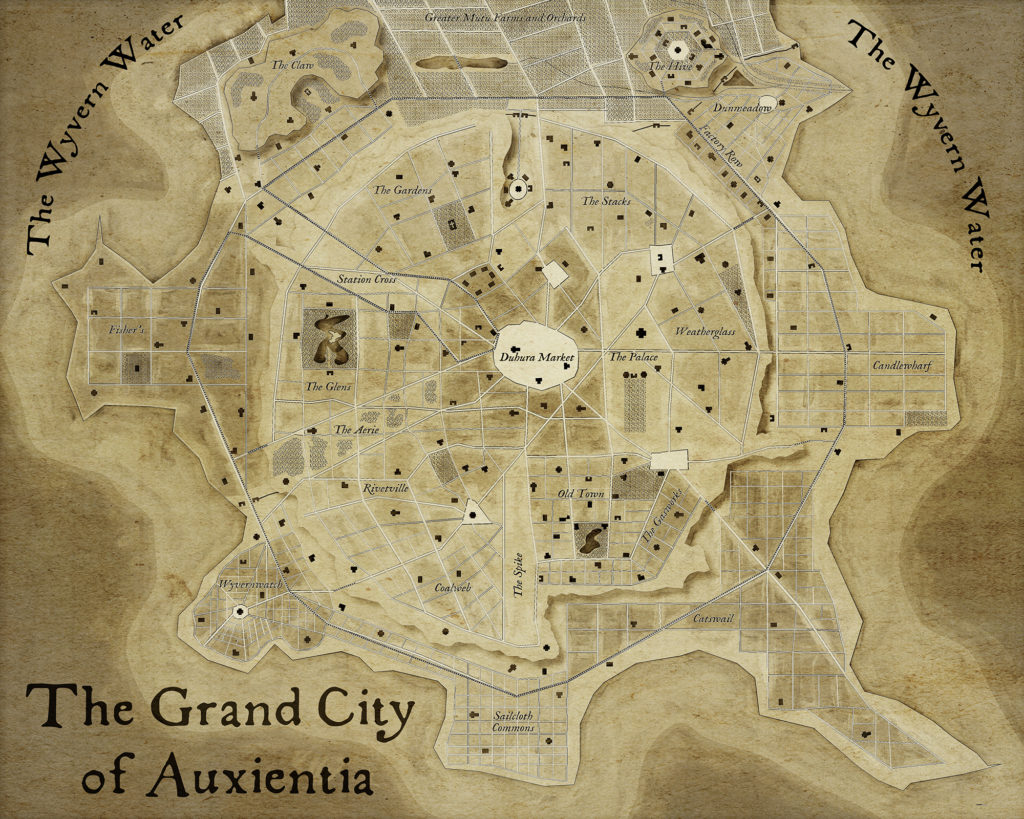
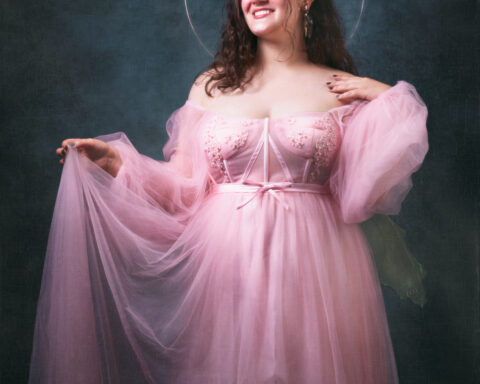
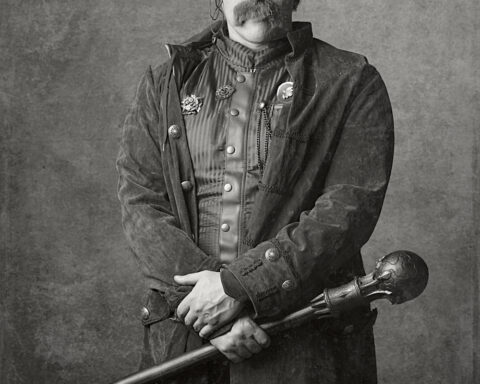
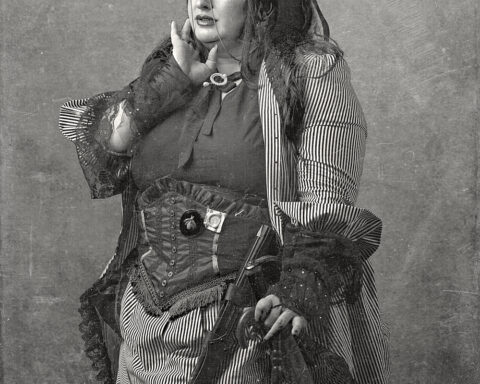
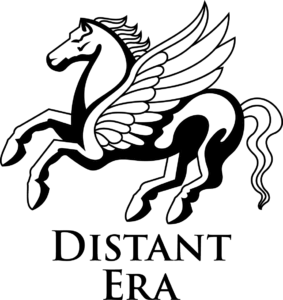
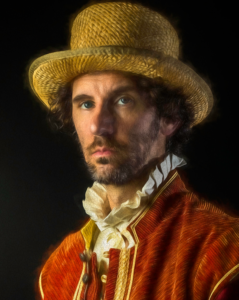
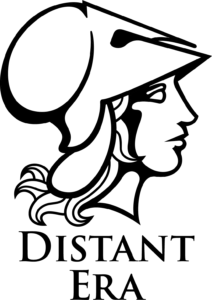
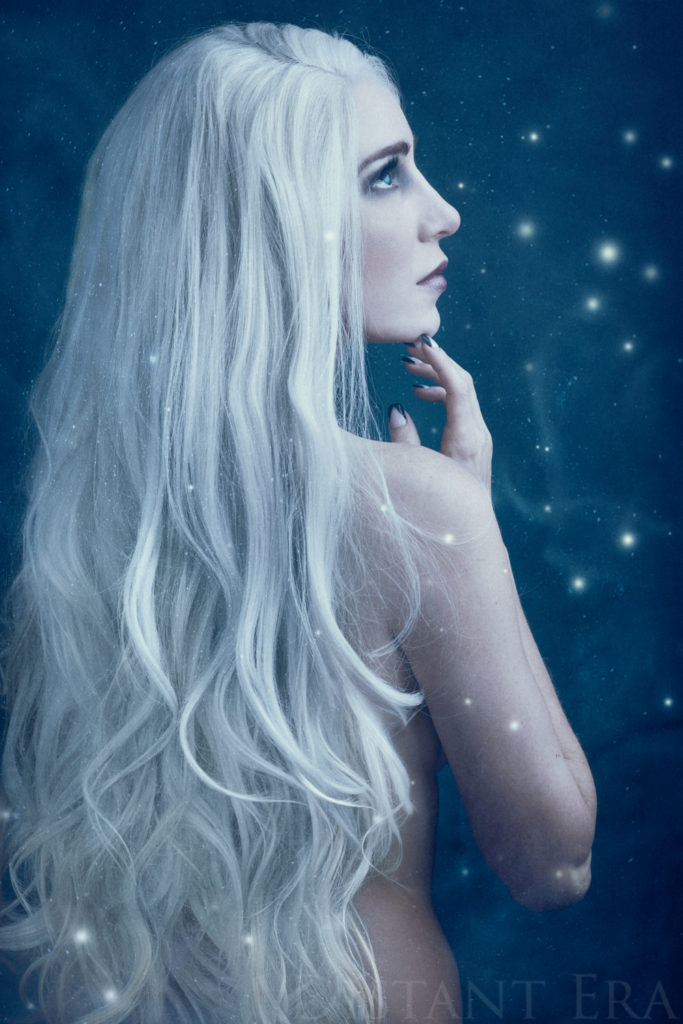
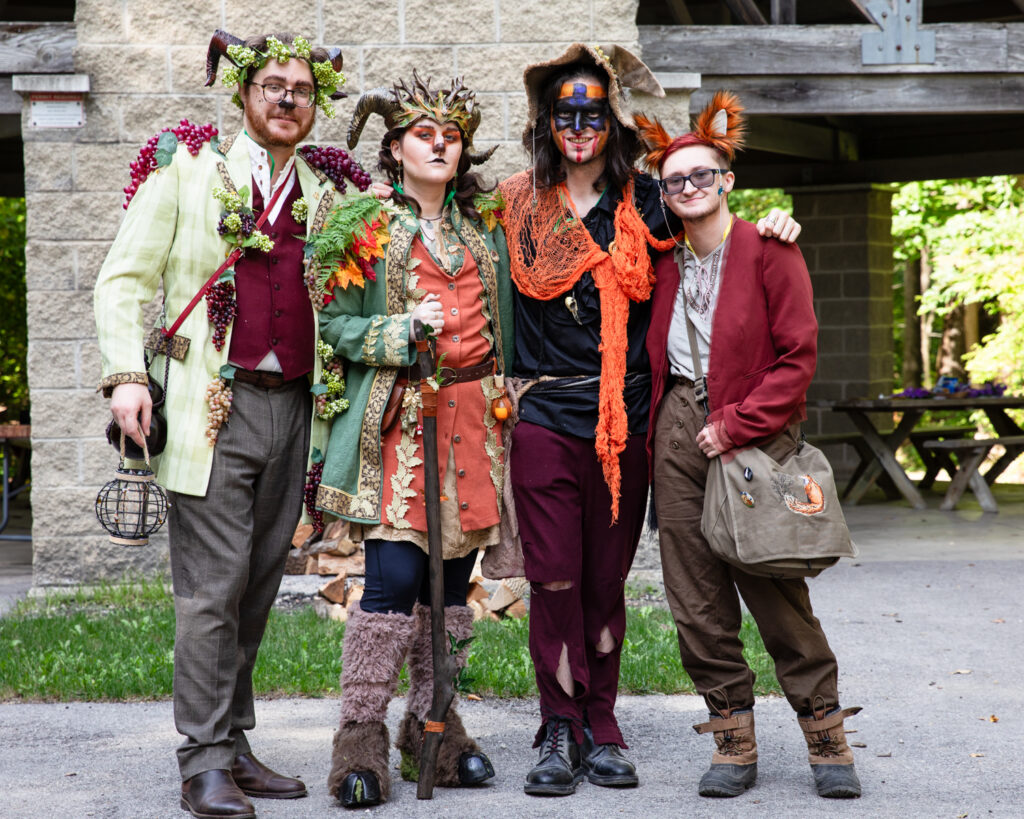
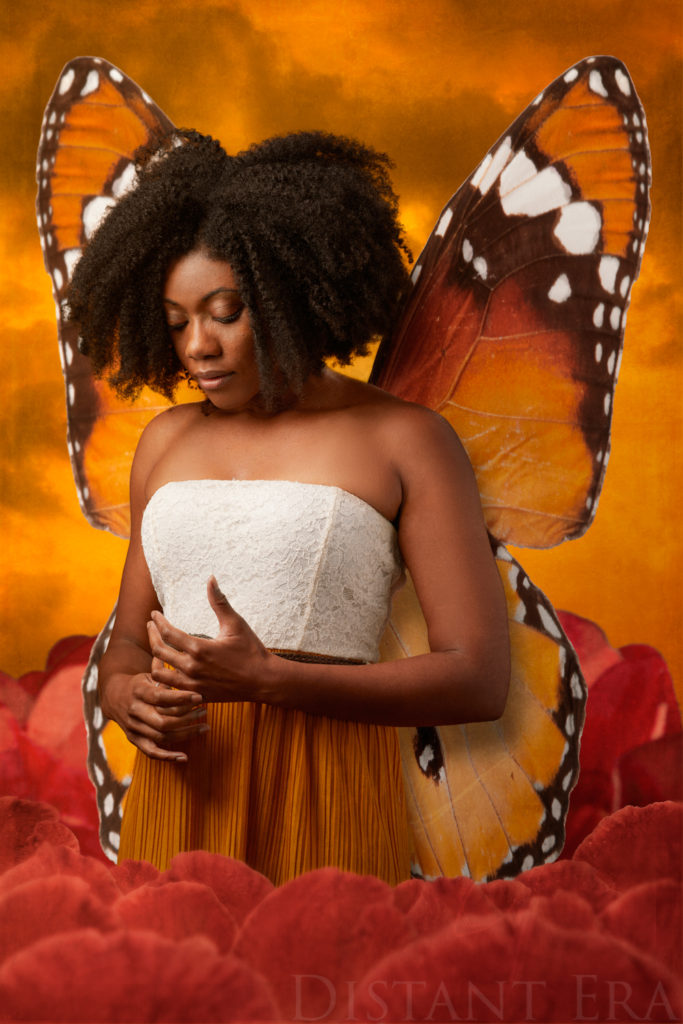

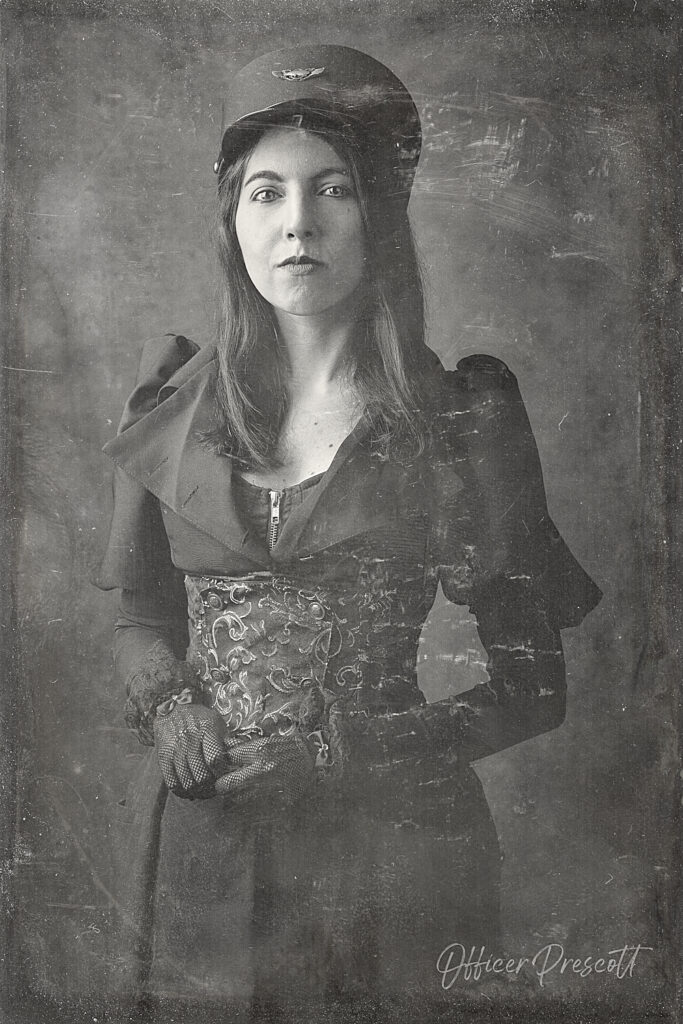
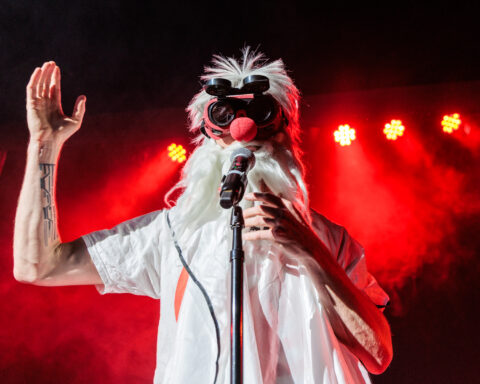
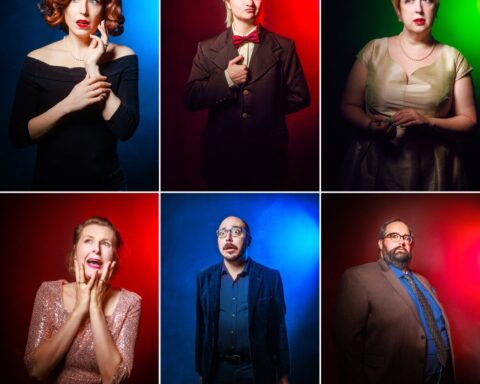
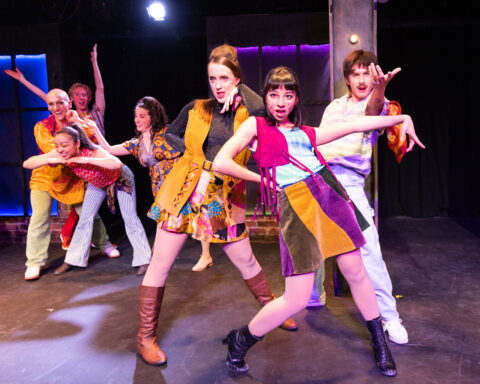

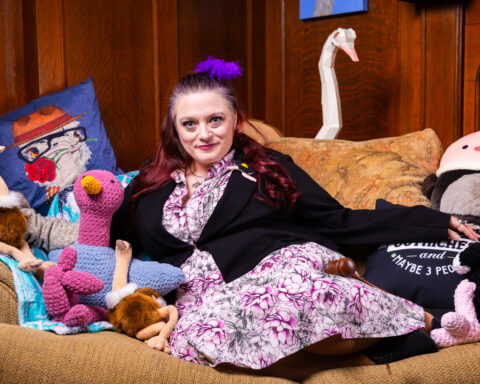
[…] time, I described documenting the first night of the Auxienita live action role-playing experience in snapshots using flash. Now we’ll look at the […]
[…] by Nathan Pease, Hilary Dirks Norton, and Steve Townshend in 2019, with events in 2022 and 2023.) So far, our series has included Officer Prescott (Deana Vazquez) and Robert Irons (John Kidd). […]
[…] at Deana Vazquez’s portrait for the Auxientia steampunk fantasy live action role-playing game. The week before, we took a look at some snapshots on the opening night of the game itself. This week in our steampunk portraits series, we’re […]
[…] by Nathan Pease, Hilary Dirks Norton, and Steve Townshend in 2019, with events in 2022 and 2023.) So far, our series has included Officer Prescott (Deana Vazquez), Robert Irons (John Kidd), and […]